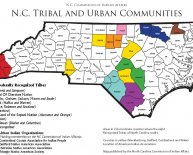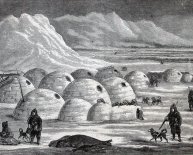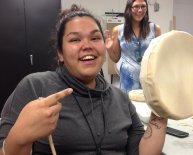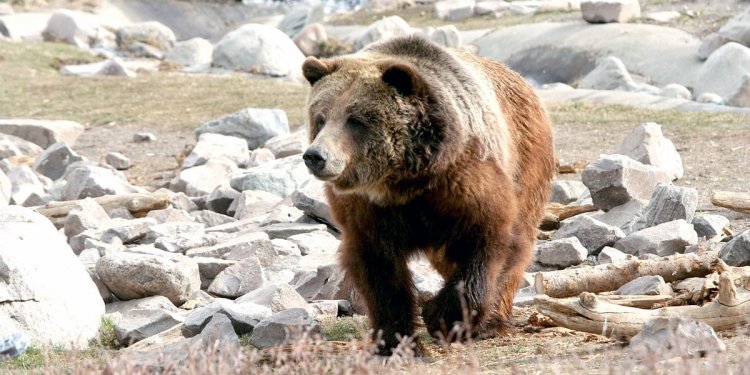
Native Canadian Peoples
The expressions "indigenous Canadians" or "Aboriginals" explain the descendants of those who had been located in what exactly is modern-day Canada before European colonists, explorers, and dealers arrived in the 1600s. Providing labels to these teams is difficult by psychological and historic problems. Aboriginals populated all areas of Canada and the US, and dozens of tribal groups, existed, hunted, fished, and foraged (collected indigenous flowers) all across the united states. The provinces of modern-day Canada obviously did not occur once the Europeans appeared regarding the eastern coastline of Canada.
The Inuit inhabit the northernmost areas of Canada. On April 1, 1999, Nunavut (obvious NOON-ah-voot) became Canada's newest area, made from about half the land that comprised the Northwest Territories.
2 HISTORY AND FOOD
In general, most Canadians agree totally that the around 800, 000 Aboriginal Canadians counted because of the 1996 Census of Population could be identified as owned by certainly one of three teams: First Nations (554, 000), Métis (210, 000), and Inuit (Innu, 40, 000). Initial countries people are people in the around 50 recognized "First Nations" or tribal groups in Canada, and they inhabit all parts of Canada. The Métis tend to be descendants regarding the intermarriages that occurred amongst the men employed by the first European fur trading companies (Hudson's Bay business and Northwest Fur business) and indigenous Canadian females.
The Inuit are the descendants associated with Thule individuals who migrated through the Canadian arctic 700 to 800 years back. They've been inhabiting the area of modern Canada for many thousands of years. These people were typically hunters and fishers. Due to the
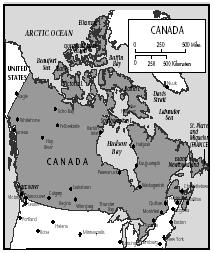 harsh climate of these northern homelands, the Inuit diet included hardly any fresh vegatables or fresh fruits. In the short summers, they'd gather berries, both for eating fresh and for drying for eating during long, cold winter. They would also gather seeds and peanuts to keep to augment the wintertime diet. Grains such corn, grain, and crazy rice were gathered and dried. Grains would occasionally be ground to produce flour, or mixed with water and prepared.
harsh climate of these northern homelands, the Inuit diet included hardly any fresh vegatables or fresh fruits. In the short summers, they'd gather berries, both for eating fresh and for drying for eating during long, cold winter. They would also gather seeds and peanuts to keep to augment the wintertime diet. Grains such corn, grain, and crazy rice were gathered and dried. Grains would occasionally be ground to produce flour, or mixed with water and prepared.
Pemmican is a healthy, high-calorie meals that can be ready in volumes and kept. The French and English explorers, trappers, and traders, bought large quantities of pemmican from Aboriginals, and even learned which will make pemmican. Pemmican will be sealed inside an animal skin or tummy cavity to protect it. Europeans carried these pemmican stores on long furtrading expeditions.
Components
- 1 bundle meat jerky
- 1 cup dried out berries, such as dried blueberries, cranberries, or cherries
- 1 glass chopped peanuts or sunflower seeds
- ¼ cup beef suet or veggie shortening
- Honey to taste (1 to 3 teaspoons)
- 12-cup muffin tin
Treatment
- Line muffin glasses with paper liners (or grease cups well).
- Grind or cut beef jerky into confettisize pieces to make about 1 cup. Melt suet or shortening in a saucepan.
- Pull from heat, stir in beef jerky, dried fruits, and seeds. Stir in honey.
- Spoon about ¼ cup of the pemmican combination into each muffin glass. Press down firmly to make a cake, smoothing the utmost effective.
- Refrigerate until well-set.
Helps 12.
3 FOODS OF INDIGENOUS CANADIANS
The original diet of Aboriginal individuals was composed of the animals and plants located on the land and in the sea around them. Seal, whale, buffalo, caribou, walrus, polar bear, arctic hare (rabbit), all sorts of fish and many types of bird had been hunted or fished. Natural blubber (fat) had been enjoyed or combined with meat or fruits. Every section of the pet had been eaten or always make clothing or shelter. Because the meals were eaten natural or with minimal processing, the Aboriginal individuals were generally well-nourished.
Modern First countries, Métis, and Inuit individuals have included fast foods and convenience foods with their conventional diet, and are also experiencing the health problems that come from usage of foods rich in sugar and additives (including oral cavaties and obesity).
Their particular traditional diet ended up being nutritionally beneficial and saturated in calories, although calories had been necessary to help keep their health warm through long, frigid winters. During quick summers, Aboriginals (primarily the women) would plant small landscapes and gather wild berries and seeds. Corn, beans, and squash were typical veggies grown inside small landscapes of Manitoba and Alberta. These veggies had been usually simmered to make soups or stews, such as for instance Three cousin Soup (the "sisters" are corn, beans, and squash).
Snacks were frequently enjoyed right on the trail—a few berries or dried seeds plucked through the wild plants. Some were eaten directly on the location, and some was held home to generally share or save for another time.
Saskatoon Berry Treat
Saskatoon berries, similar to blueberries, are chosen and eaten in the wild by Aboriginal Canadians for centuries. Within the late twentieth century, commercial fresh fruit growers began growing crops of these tasty berries to offer to grocery stores.
- 1 pint fruits (is blueberries, raspberries, strawberries, or any other fresh berries or
- 1 package dried fruits (blueberries, cranberries, or any other berries)
- If utilizing fresh fruits, rinse them under running water.
- Divide fruits into several waxed report bags or synthetic baggies. Carry these along for snacks during the day or even share with a friend.
Serves 8 to 10.
- 3 cans chicken broth
- 2 glasses frozen corn, thawed
- 1 cup green beans or yellowish wax beans, washed and stops cut off
- 1½ cups of butternut squash (or pumpkin)
- 2 bay leaves
- Salt-and-pepper to taste
- Recommended spices: ½ teaspoon red pepper flakes or 1 teaspoon each fresh (or ½ teaspoon each dried) parsley, basil, and oregano
- Pour the chicken broth into a big saucepan or kettle. Temperature until the broth begins to boil.
- Include the corn, beans, squash, and bay leaves.
- Reduced temperature and simmer for 45 moments.
- Include optional herbs if desired, and simmer 15 more minutes.
- Take away the bay departs, and move the soup in batches toward blender to puree if desired. Offer with bannock (loaves of bread).
Aboriginal peoples just who lived regarding the prairies of western Canada ingested buffalo (and made use of buffalo skins for garments and refuge). In central Canada, Ojibwa men and women would gather crazy rice from oceans of Ontario and Manitoba, and can dry after which roasting it. The fur dealers, whom came into connection with Aboriginal individuals all over Canada, introduced a bread just like the Scottish scone. It became referred to as bannock . Bannock could be baked (Aboriginal people would put it in hot rocks near a campfire) or twisted onto a stick and prepared over hot coals.
Bannock
Bannock might baked in oven or higher a charcoal or open-fire (dish for Bannock on a Stick uses).
- 4 glasses all-purpose flour
- 1 Tablespoon sugar
- 2 Tablespoons baking dust
- ½ tsp sodium
- 2 glasses milk (or water)

